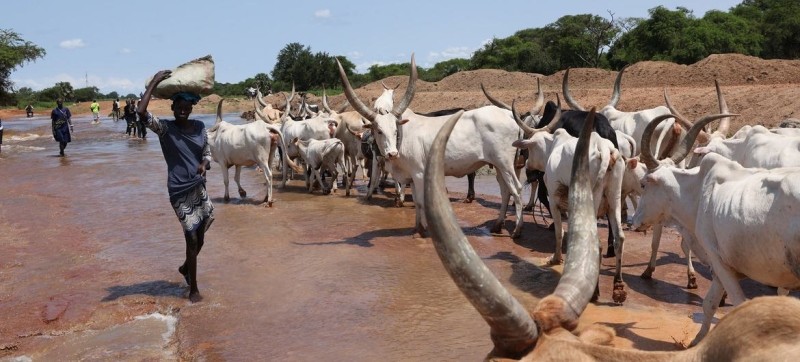
© UNMISS/Nektarios Markogiannis
Space-based observations and AI modelling are already transforming the science of forecasting, a potential gamechanger for countries ill-equipped to protect themselves from weather hazards, such as South Sudan.
“We need urgent and ambitious action now to support sustainable development, climate action and disaster risk reduction. The decisions we make today could be the difference between a future breakdown or a breakthrough to a better world,” said WMO Secretary-General Celeste Saulo.
Echoing the stark assessment of the latest UN-partnered United in Science report that record concentrations of greenhouse gases will fuel global temperature increase, Ms. Saulo said that extreme weather “is wreaking havoc with our lives and our economies”.
Her comments came against a backdrop of deadly wildfires across Latin America and Portugal, along with catastrophic flooding in central Europe linked to Storm Boris that has inundated parts of Austria, the Czech Republic, Hungary, Poland, Romania and Slovakia.
And in a call for global action coinciding with the upcoming Summit of the Future at UN headquarters in New York, the WMO chief underscored the untapped potential of natural and social sciences, new technology and innovation to help countries develop, reduce their vulnerability to disaster and adapt to climate change.
AI and machine learning are already revolutionizing the science of weather forecasting by it “faster, cheaper and more accessible”, she noted, before adding that cutting-edge satellite technologies and virtual reality simulations are now “opening new frontiers” in key sectors already threatened by climate change and hazardous weather, such as land and water management.
Highlighting the value of satellite technology to climate science, Ms. Saulo explained that innovations in space-based Earth observations can improve monitoring of greenhouse gas sources and carbon sinks.
The WMO Secretary-General also noted the potential of new technologies such as “digital twin” – which creates a virtual replica of a physical object – and virtual reality – which offers immersive simulated environments – to help achieve universally agreed Sustainable Development Goals and enhance disaster preparedness.
Ms. Saulo insisted that technology alone will not be enough to solve climate change, as she urged all countries to share their expertise and experiences at the Summit of the Future in New York from 22-23 September, “to ensure that the benefits of science and technology are accessible to all if we are to achieve global goals”.
Global goal objective
These goals include the Paris Agreement, the Sendai Framework for Disaster Risk Reduction and 2030 Agenda for Sustainable Development (SDGs).
According to the latest climate data in this year’s United in Science report, there is an 86 per cent chance of at least one year in the next five years exceeding 2023 as the warmest year on record. There is also an 80 per cent chance that the global mean near-surface temperature will temporarily exceed 1.5C above pre-industrial levels in at least one of the next five years.
Progress has been made in mitigating global global greenhouse gas emissions, “but the emissions gap remains high”, the WMO-partnered report notes. It further warns that if there is no change to current policies, there is a 66 per cent probability that global warming will reach 3C this century. “To reach levels consistent with limiting global warming to below 2C and 1.5C, global greenhouse gas emissions in 2030 must be reduced by 28 per cent and 42 per cent respectively, from the emission levels that current policies are projected to deliver,” the report’s authors insist.

